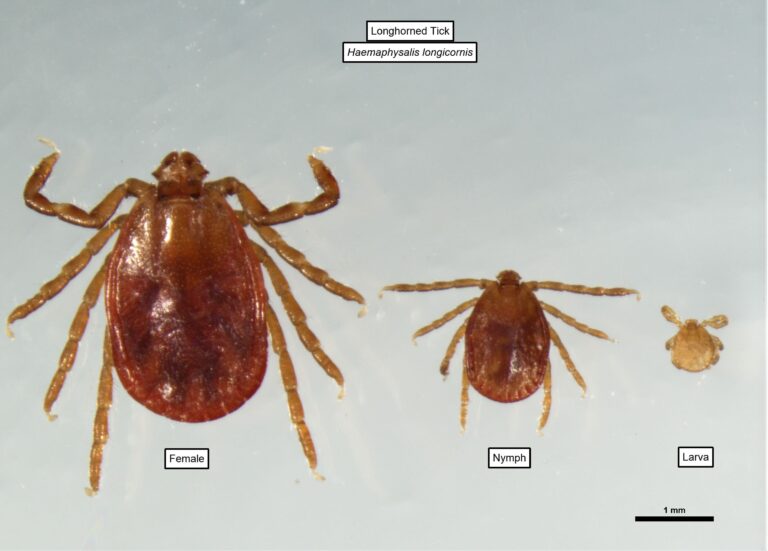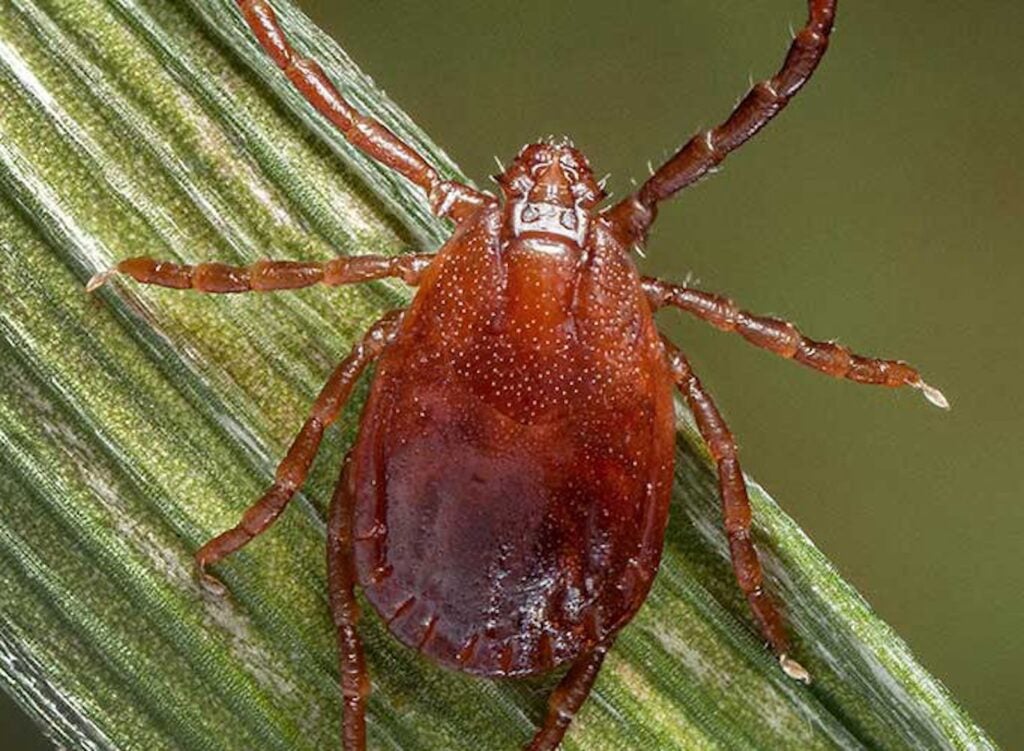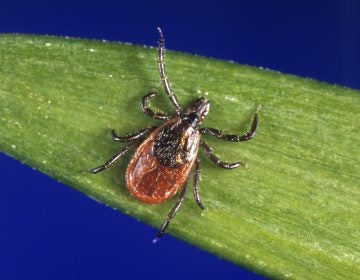An invasive tick is swarming southeastern Pa. Here’s what you need to know
Why researchers say the Asian longhorned tick is spreading so rapidly — and why it could pose a serious threat to human and animal health.
Listen 1:08
A longhorned tick, or Haemaphysalis longicornis, is seen through its life stages. (Ben Paul/Pennsylvania Department of Environmental Protection)
From Philly and the Pa. suburbs to South Jersey and Delaware, what would you like WHYY News to cover? Let us know!
A few months ago, then-Temple University graduate student Payton Phillips was hiking in Silver Lake Park in Bucks County when she realized she’d been swarmed.
“I was just pulling ticks off of me,” Phillips said. “I could see them — I could watch them climbing up my boots.”
The culprits weren’t just your run-of-the-mill local ticks — they included a new addition to the bloodsucking game: Asian longhorned ticks, an invasive species that’s spreading fast, and could pose a rising threat to humans and animals alike.
The rise of longhorned ticks
Phillips, who’s now a postdoctoral researcher at the University of Georgia, didn’t originally set out to study longhorned ticks — her thesis was focused on Lyme disease, and the ticks that spread them: blacklegged, or deer, ticks. But while she was out collecting samples, she quickly realized that longhorned ticks were on the rise.
“We knew that they were in the area, but we didn’t expect to end up collecting hundreds of them,” Phillips said.
Asian longhorned ticks were first discovered in the U.S. in 2017 on a New Jersey sheep farm just north of Philadelphia. Since then, the invasive ticks have spread to 22 states, said Keith Price, who manages the Vector Management Laboratory at the Pennsylvania Department of Environmental Protection.
“The longhorned tick has spread to an average of four new counties every year,” Price said. “And presently, Longhorn ticks are found in 27 counties in Pennsylvania — almost the entire southern half of Pennsylvania.”
The greatest abundance, he said, remains in the area where they were first discovered, which includes southeastern Pennsylvania. Over the past five years, longhorn tick numbers have spiked by around 150%, becoming the second-most common tick in Pennsylvania.
“So, to sum this up in a nutshell, they’re spreading quickly, and when they do spread, there’s often quite a lot of them,” Price said.
A big part of the reason they’ve managed to spread so quickly, Price said, is that they’re parthenogenetic, which means females are capable of reproducing asexually without the aid of male ticks.
“So the implications of this mean that a single individual female that lays around 2,000 to 2,500 eggs, all without mating, can create an entire population just by that individual,” Price said. “There’s no other tick in North America that reproduces in this manner. And it’s this unique reproductive strategy that enables the Longhorn tick to very successfully and very rapidly invade new geographic regions across the state and the country.”
He added that migratory hosts, including white-tailed deer and black-capped night herons, are capable of carrying the ticks across vast distances, which also accounts for their rapid geographical spread.

Potential threats to public health
One of the biggest questions researchers are asking about longhorned ticks is how much of a threat they pose to humans.
Past research out of Asia has found that longhorn ticks can carry a large variety of pathogens that affect human health.
“But it’s not 100% clear if it actually vectors those pathogens,” Phillips said. “So even if it has the bacteria or the virus inside of it, is it going to give it to you if it bites you? That’s not 100% clear. So that’s part of what we were trying to figure out in our research.”
To investigate that question, Phillips, along with Temple University ecologist Jocelyn Behm and undergraduate student Jackson Fahey, collected longhorned ticks from forested areas around the Philadelphia area, and tested them for pathogens. The results were good.
“None of the ones that we collected carried any pathogens,” Phillips said. “So if you get bit by one around Philadelphia, you hopefully aren’t going to get a disease right away.”
Those findings match with other, previous rounds of testing that likewise found that longhorned ticks aren’t yet carrying some of the pathogens most dangerous to humans.
But that’s not the end of the story. Price said that some of his lab’s current research has discovered multiple pathogens of human health concern in longhorned ticks collected from Pennsylvania parks and public use areas. Among the pathogens they found is the bacteria responsible for causing Lyme disease, though Price added that studies from Centers for Disease Control and Prevention have shown that longhorned ticks are less likely to spread Lyme disease because the bacterium tends to be lost during their molting stage.
Still, Price said, the tick is so new that the role it plays in terms of disease transition remains largely uncertain.
However, past studies have found that longhorned ticks are capable of spreading several pathogens that can be found in Pennsylvania, including Rocky Mountain Spotted Fever and Powassan virus, a rare but serious disease that can cause encephalitis and meningitis.
“Typically with Borrelia burgdorferi, the bacterial agent responsible for Lyme disease, the tick has to be attached for 36 hours before that bacteria can be transferred through the bite to an individual,” Price said. “But with Powassan virus, it’s only about 15 minutes, and that’s just because the virus is maintained in the mouth parts and the salivary glands compared to the Lyme disease bacteria that’s maintained in the midgut of the tick.”
Price added that Phillips’ study helped demonstrate that there is significant overlap in habitat between longhorned ticks and local ticks, which provides a potential pathway for pathogens to be transmitted between the species.
Also of concern is the fact that longhorned ticks are more aggressive in their pursuit of hosts and more likely to swarm than other ticks, as well as findings indicating that they’re more likely to be found in areas where local ticks typically don’t reside, like manicured lawns. They’ve also been found to affect domestic animals, like dogs, and can pose significant threats to livestock like cattle.
Luckily, longhorned ticks can be protected against using the same methods recommended for local ticks, including keeping your skin covered, and the use of repellents approved by the U.S. Environmental Protection Agency, like permethrin.

Get daily updates from WHYY News!
WHYY is your source for fact-based, in-depth journalism and information. As a nonprofit organization, we rely on financial support from readers like you. Please give today.






